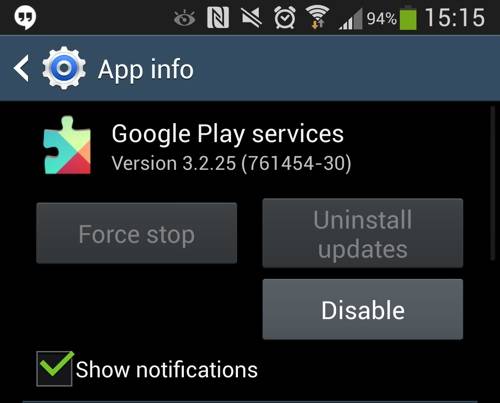
Google has announced that the Google Play Services 3.2 update has finished rolling out. This includes devices around the world that are running Android 2.2 Froyo or later. While the Google Play Services listing is easily found in the App info section, it isn’t one that many users likely ever concern themselves with. Needless to say, this time around the Google Play Services update brings talk of performance and power saving improvements and more.
The remaining items addressed in this update include enhancements to the Location Based Services, maps, InstantBuy, Google+ and PhotoSphere. Keeping in mind some of the specifics are addressed to developers, the Location Based Services portion deals with something called the “Fused Location Provider” which Google says will support a low-power mode for times when multiple location updates are requested. Developers will also have the option to fire off mock locations for better app testing.
There was also some updates to the geofencing APIs which now support hardware-based GPS geofencing. This applies to devices such as the Nexus 4 which has supported hardware, but means those devices with support should see battery improvements. This one is good for the developer and end-user as apps will be able to automatically take advantage of this new functionality.
This update also touched on a new Snapshot feature in the maps API. This one brings the ability to capture a bitmap image of a current map (to improve performance) when an interactive maps ins’t needed. Otherwise, Google has also brought some additional features for those who have added the Google+ sign-in to their apps. This means developers will be able to take advantage of the simplified sharing control (which makes it easy to share directly to Google+) and some added “butter” to the Google+ sign-in animation.
Finally, Photo Sphere now has a compass mode that allows users to explore these images by moving their phone or tablet and the InstantBuy implantation has been improved with goodies to include increased efficiency, improved latency, a cleaner UI and more. Bottom line here, while some of these items are aimed more towards the developers — the end users should be happy to learn that Google is working to improve the battery life of your devices.
SOURCE: Android Developers Blog









